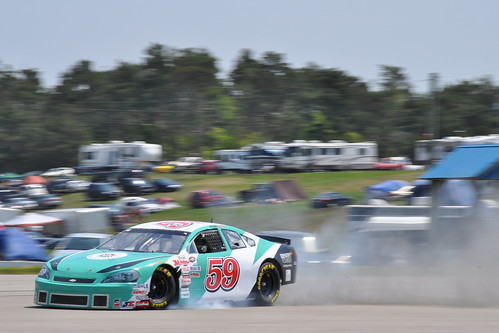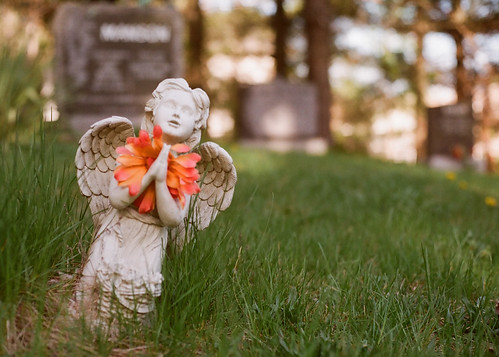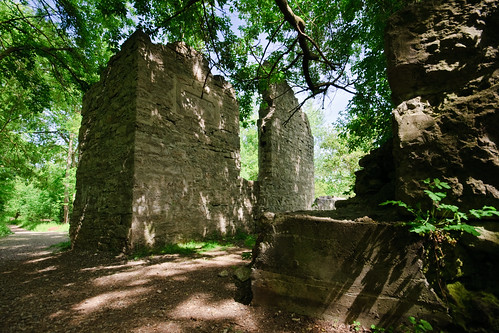Gosh, it’s been a while. Things have been happening, but blogging has not been one of them. In recent memory, I’ve said I intend to post about more of my recent film camera acquisitions, and additional delving into local history. I’m not sure this post is going to satisfy either of those promises. Not much, anyway.

Racing season beginneth – getting it slightly wrong on the first lap.
In among some automotive shenanigans, the local sportscar racing season having kicked off on Victoria Day weekend, I’ve also managed to punch a few more rolls through the old cameras, mainly by haunting more old cemeteries – plus a few more modern ones.

King City Cemetery – Kodak Gold 200 film, Minolta Hi-Matic 11 camera.
Even more fun is the beginning of this year’s reprise of my role as an event photographer for the Honda Indy Toronto race weekend, coming up in July. This year’s first event was a photo call with popular Canadian drivers James Hinchcliffe and Alex Tagliani, as part of the publicity run-up to the Indy 500, which was last Sunday. Neither driver won, sentimental favourite and perennial runner-up Tony Kanaan finally taking his first title, but on this day, both Canadians were in fine form, answering fan questions on Toronto’s sunny waterfront.

James “The Mayor of Hinchtown” Hinchcliffe and Alex Tagliani, Harbourfront, Toronto.
Lest you think that all I’ve spent the last few weeks doing was chasing around with a camera, yesterday I spent the morning interviewing potential undergraduate co-op students from the nearby University of Waterloo. That requires an always-enjoyable drive to Wellington County – of course with a stop-off here or there if time permits. This time, “there” was the ruins of the old mill in Doon, Ontario, a lovely location I was tipped off to by excellent nature photographer and mill enthusiast Harold Stiver, whose work you can see on Flickr.

Ferrie’s mill in Doon, dated 1839.
So there you have it – not much of great import happening, and a pretty lackadaisical approach to reporting it. Things will only get busier as the summer approaches… including, if all goes to plan, increasing by several hundred percent the number of Occam’s Typewriter authors I’ve met in person – a figure that won’t be hard to beat, since it currently stands at just one.


Sometimes, uneventful summers are good. I’m hoping mine settles down soon.
Hello Richard.
My name is Shelagh Lippay and I ran across your work as a photographer completely by happen chance. I was looking for images of Maple, Ontario. I grew up in Maple (born and raised)
From the years 1963 – 1981. My mother (died 1980) tried to stop the construction of Wonderland in its beginnings, for fear that it would ruin a small farming town, and close knit community. How right she was. I have been fortunate enough to be reacquainted with over forty child hood friends from Maple via Facebook.
Many of the old homesteads have been destroyed so it was with great happiness to see your work. We were a very tight community during those years with our parents being some of the original inhabitants of the town.
The irony that you live there now, is just surrendipitous to how my life goes sometimes.
I would be very interested in seeing any old pictures that you might share.
I lived at the corner of Goodman Crescent and Gosling Road. Keele and Major Mackenzie used to have an old feed mill, and the Robsons and Sur-Gain were big farm names during that era.
I wish you all the success with finding some cure for arthritis as I was diagnosed with it in my hands two years ago, and being a landscaper (and very amateur photographer/artist) the impediment causes much frustration.
Cheers,
I hope you will be in touch.
Yours truly,
Shelagh Lippay
Good to hear from you, Shelagh.
I’ve only lived in Maple since 1999 so have no old history to speak of. Thanks for the information about the old feed mill – nothing left now of course.
When we moved here, the old clapboard church in Teston was still a good landmark for people trying to find us. Unfortunately, with the Teston Road widening and Highway 400 ramp construction, it was flattened. One of the last remnants of that old village. I’ve had better luck finding traces of original pioneer settlements through their graveyards, which you can read about in this post, and a tiny bit in this one, if you’re interested.
I haven’t worked on inflammatory disease for a while, but there are plenty of talented researchers who do. Good luck with your arthritis, and thanks again for stopping by.